A DESTINATION MANAGEMENT PLAN FOR CUMBRIA: 2024 TO 2030
EXECUTIVE SUMMARY



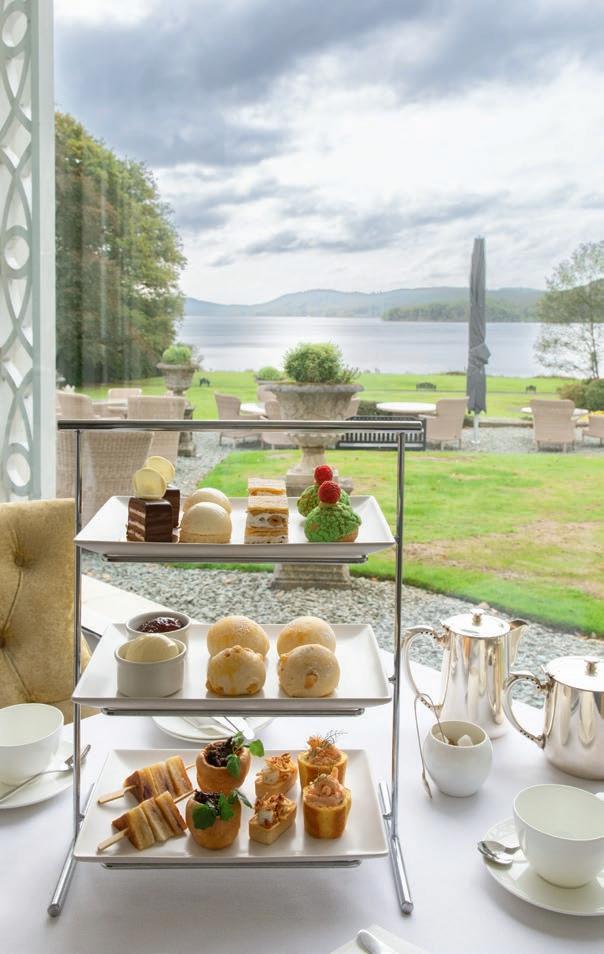

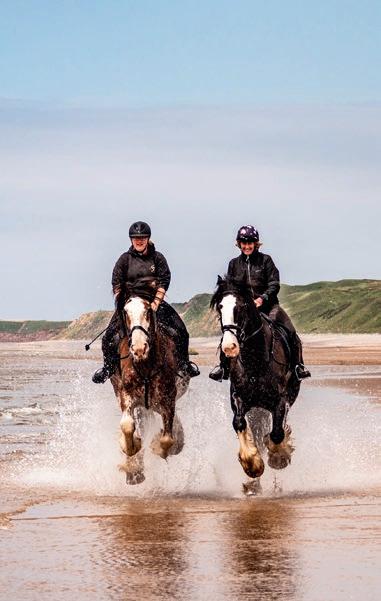

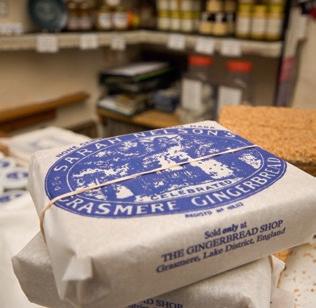
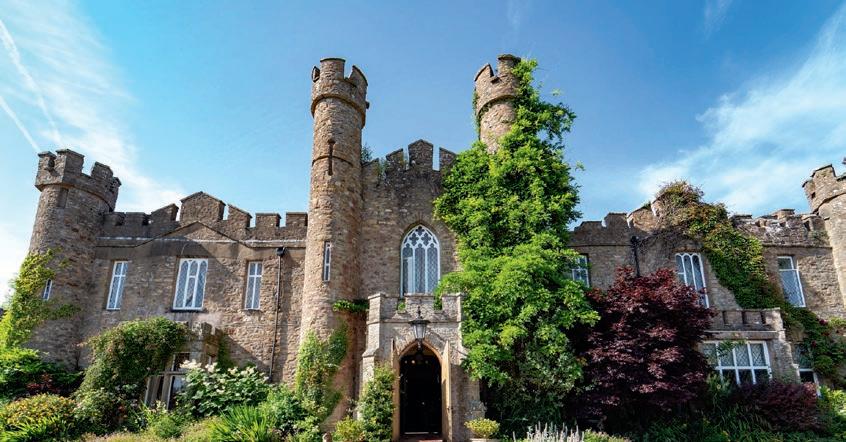

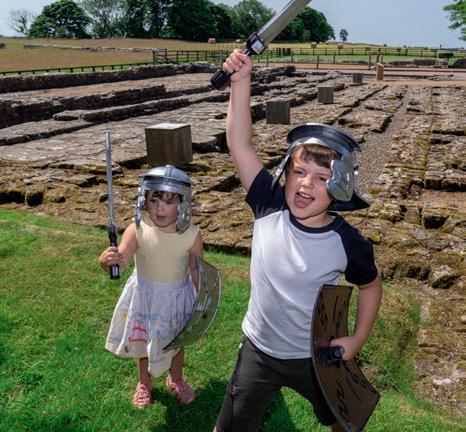
cumbriatourism.org/dmp
This is the Executive Summary - the full report can be found at: www.cumbriatourism.org/dmp
This Destination Management Plan for Cumbria has been led by Cumbria Tourism in consultation with the following partners:




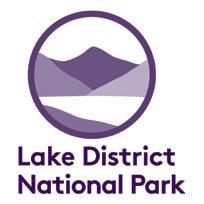
A DESTINATION MANAGEMENT PLAN FOR CUMBRIA: 2024 TO 2030 2 CONTENTS OUR VISION 5 PRINCIPLES OF THE DMP ..................................................................................................................... 6 THE ROLE OF THE VISITOR ECONOMY IN CUMBRIA 7 KEY OBJECTIVES AND INTENDED OUTCOMES ..................................................................................... 9
Front cover image credits: Brockhole-on-Windermere, Langdale Chase, Storrs Hall and Visitlakedistrict.com

Cumbria is a top UK visitor destination and place of national and international appeal. It is home to two UNESCO World Heritage Sites (the English Lake District and Hadrian’s Wall), two National Parks (The Lake District and the Yorkshire Dales) and three National Landscapes (Silverdale & Arnside, the Solway Coast and the North Pennines, which is also designated as an UNESCO Global Geopark).
Through this shared Destination Management Plan (DMP), public and private sector partners are seeking to ensure a joined-up approach to support a successful visitor economy for the whole of the county, supporting economic growth, supporting the natural environment and delivering benefits for our host communities. The DMP seeks to ensure a balance between the economic benefits from a successful visitor economy and the need to support the environment and communities of Cumbria.
3 A DESTINATION MANAGEMENT PLAN FOR CUMBRIA: 2024 TO 2030
Catbells overlooking Derwentwater
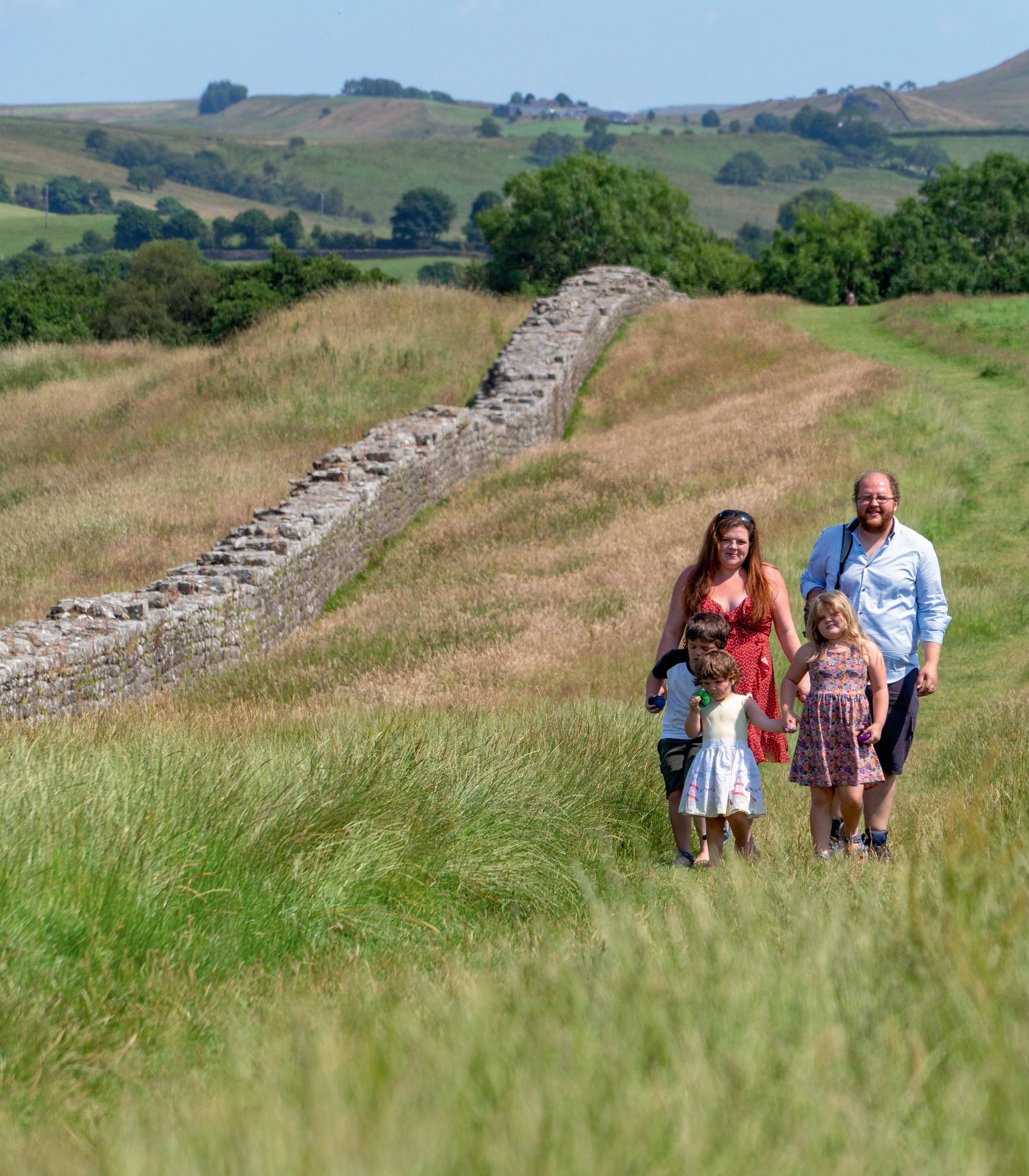
A DESTINATION MANAGEMENT PLAN FOR CUMBRIA: 2024 TO 2030 4
Birdoswald Roman Fort, Hadrian’s Wall
Famed for our world-class landscapes and culture - by 2040 Cumbria will be Britain’s most vibrant and sustainable rural destination, boasting a reputation for quality, welcome, and an adventure for everyone - bringing benefits for our visitors, economy, nature and communities.
5 A DESTINATION MANAGEMENT PLAN FOR CUMBRIA: 2024 TO 2030
OUR VISION
The vision is long-term and will take time to achieve. The key objectives and summary actions for the next 6 years in this DMP (set out below) will move Cumbria towards the long-term vision. The plan will be monitored by a Steering Group1, with regular reviews of progress.
The DMP is ambitious and will require very strong partnership working and the active engagement of a wide range of partners across the public and private sector.
PRINCIPLES OF THE DMP
To support the DMP, all partners support and uphold the following principles:
1 2
3
4
Sustainable tourism will be at the heart of everything we do2 .
Our actions will be evidence based, inclusive and equitable, respectful and supportive of our communities and of benefit to visitors.
Collaborative and solutions focussed.
A commitment to maximising our collective resources and expertise and avoiding duplication.

1 Current membership includes: Cumbria Tourism (CT), Cumberland Council, Westmorland and Furness Council, Cumbria Local Economy Partnership (CLEP), the Lake District National Park Authority (LDNPA), the Yorkshire Dales National Park Authority (YDNPA), a Hadrian’s Wall representative and CT Board representatives from the private sector.
2 Sustainable tourism is defined by the UN Environment Programme and UN World Tourism Organisation as “tourism that takes full account of its current and future economic, social and environmental impacts, addressing the needs of visitors, the industry, the environment and host communities”. This DMP uses the term sustainability in this broad sense.
A DESTINATION MANAGEMENT PLAN FOR CUMBRIA: 2024 TO 2030 6
Cross Bay Walk, Morecambe Bay
THE ROLE OF THE VISITOR ECONOMY IN CUMBRIA
Cumbria has a large and important visitor economy. In 2022, the 41 million visitors in Cumbria generated around £4.1 billion of total spend in the economy including multiplier effects. This supports £1.2 billion in direct gross value added (GVA) and overall, an estimated 34,300 jobs directly (FTEs). Taking account of supply chain and multipliers, Cumbria’s visitor economy spend supports an estimated 43,600 FTE jobs (19% of the county total) and around £1.6 billion in GVA (13% of Cumbria’s total). Throughout this DMP when we refer to visitors, this encompasses residents of Cumbria3, those visiting friends and relatives, those on business and other visitors from the United Kingdom and abroad. Improving the visitor experience will benefit all types of visitors.
As well as providing employment and being of economic importance, the visitor economy has a wider and significant role to play in supporting vibrant communities through place shaping. That includes supporting local authority priorities; providing social and community benefits and pride; driving regeneration; creating jobs; supporting public transport; underpinning a resilient supply chain; cultural, arts and heritage assets; and changing perceptions.

7 A DESTINATION MANAGEMENT PLAN FOR CUMBRIA: 2024 TO 2030
3 In 2022 around a fifth of visitors were residents of Cumbria and a further 12% were visiting friends and relatives here. Source: Cumbria Visitor Survey 2022.
Patterdale, Ullswater Valley
©Lake District National Park Authority
Changes and boosts prospects and places
Creates pride in places
Source: CT analysis and data drawn from Appendix B (see full Destination Management Plan)
Improves accessibility and inclusivity
Visitors spent £0.8 bn on food and drink and £0.5 bn in shops in Cumbria in 2022
Creates wealth and jobs
Support 43,600 FTE jobs (19% of total) and around £1.6 bn in GVA (13% of total)
THE VISITOR ECONOMY EFFECT IN CUMBRIA
Increases the appeal of Cumbria to live, work, study and invest
Helps sustain railway and bus usage and so routes
Supports a resilient supply chain
Drives inward investment Encourages private investment
Reinforces cultural, heritage, retail and community assets
Supports sustainable transport infrastructure and active travel
Improves health and wellbeing of communities and the nation
Although the visitor economy brings the benefits outlined, it is also recognised as one of the potential contributors to pressures on housing, infrastructure and the environment in some parts of Cumbria. The purpose of the DMP is to enable partners to work together to mitigate these impacts and maximise the benefits for all.
A DESTINATION MANAGEMENT PLAN FOR CUMBRIA: 2024 TO 2030 8
Figure 1: Wider value and role of the visitor economy in Cumbria
4
5
KEY OBJECTIVES AND INTENDED OUTCOMES
The DMP has four key objectives, all of which are equally important and to a large degree interlinked. For each, there are a series of ambitions which partners will measure progress against. These are focused on achieving change by 2030, the key staging post towards the 2040 vision.
OBJECTIVE – DRIVE ECONOMIC GROWTH: INCREASING THE VALUE AND PRODUCTIVITY OF CUMBRIA’S VISITOR ECONOMY
This objective is about growing the value of the visitor economy to deliver economic and social benefits by attracting visitors to stay longer, visit less well-known parts of the county4 and increase visits out of season. In doing so, this will support growth where it is needed and appropriate.
The aim of the DMP is to grow visitor value - including spreading visitors both geographically and over the course of the year - and encouraging visitors to stay longer, thereby reducing the pressures that visitor volumes can bring to certain locations at key times and the impacts on Cumbria’s communities and residents.
Ambition: Grow the value of the visitor economy by 2030 up to a third in real terms, by:
Increasing the value and share of tourism spend across the less visited parts of Cumbria (both day and overnight visitors) to increase the share of visitor spend outside the LDNP area from 47% in 2022 to 54%. Growth potential of circa. £500 million in total spend effects.
Increasing the value of tourism revenue outside the core period (April to September) and in shoulder months by circa. 10%, bringing seasonality more in line with the national average. Growth potential of circa. £230 million in total spend effects.
3
1 2 4
Increasing the contribution of overnight visitors (through total visits and visitor days) by increasing the number and length of stays. Increase share from 43% in 2022 to 47.5% or increase average stay from 3.2 to 3.8 days. Growth potential of circa. £440 million in total spend effects.
Increasing the number and share of international visitors to reach 15% of total visitor numbers5.
9 A DESTINATION MANAGEMENT PLAN FOR CUMBRIA: 2024 TO 2030
These are explained in more detail in section 3.3 of the full Destination Management Plan.
Note: This is complementary to the overnight visitor outcome. The focus is on attracting more international visitors who are coming to the UK anyway, so not increasing international air flights.
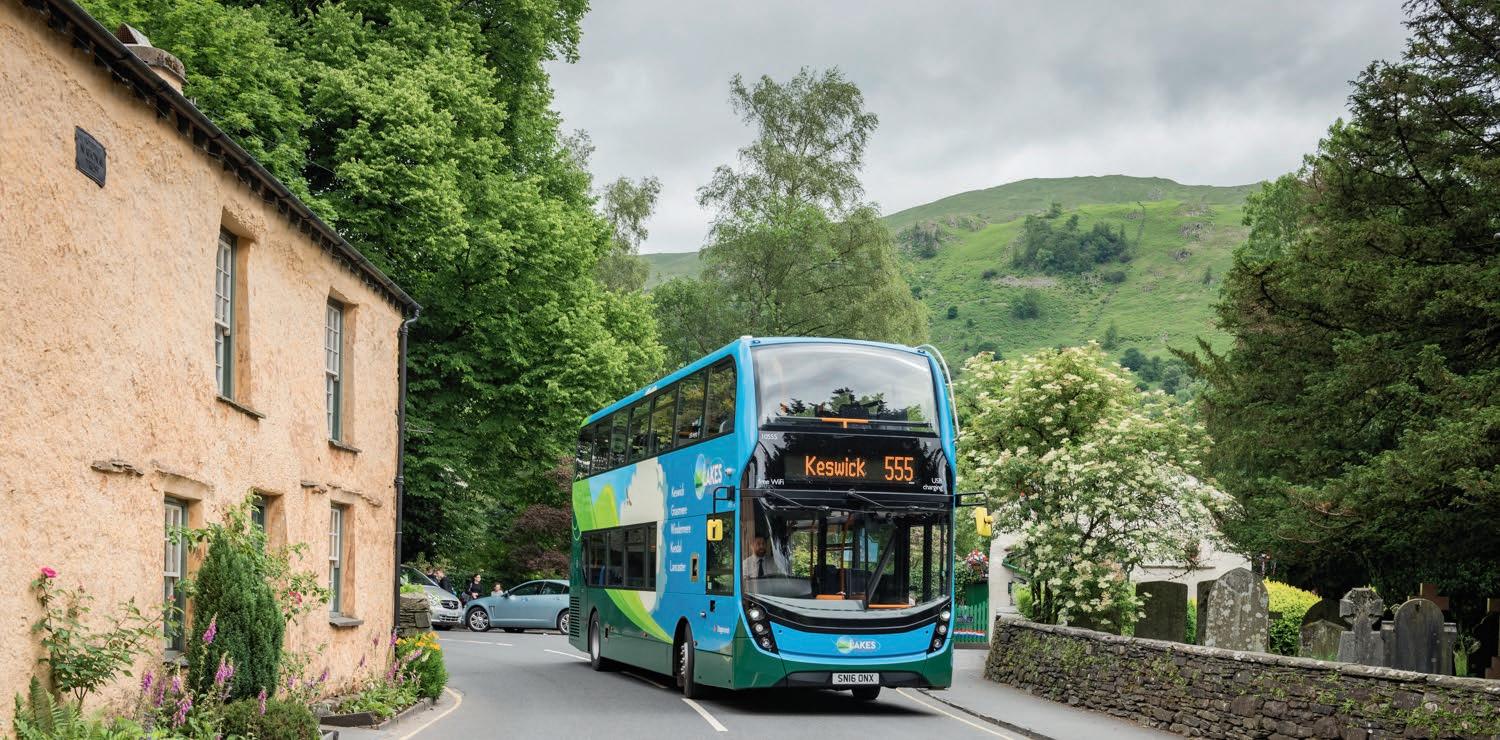

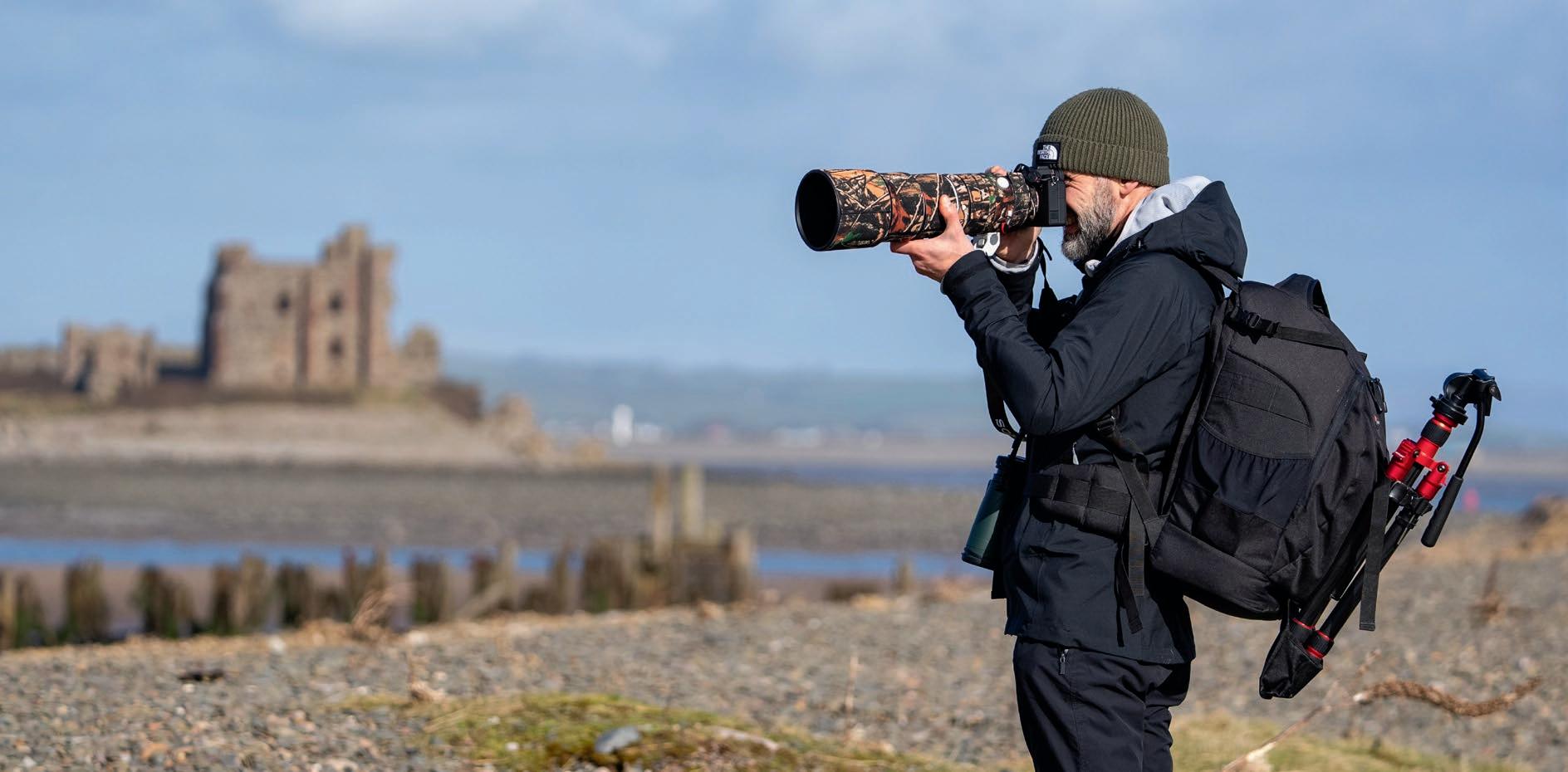
A DESTINATION MANAGEMENT PLAN FOR CUMBRIA: 2024 TO 2030 10
Carlisle Cathedral, Carlisle City of Lights
©Stuart Walker
South Walney Nature Reserve
Grasmere
©Stagecoach
OBJECTIVE – RESPONSIBLE AND SUSTAINABLE: SUPPORTING RESPONSIBLE TOURISM THAT BENEFITS THE ENVIRONMENT AND SUPPORTS VIBRANT COMMUNITIES
This objective is about positioning Cumbria as a leading sustainable and responsible tourism6 destination. This requires managing visitors as they journey to and within Cumbria to help improve visitor experience, reduce pressure on the environment and bring further benefits to host communities. It requires enabling low carbon experiences in ways which inspire, excite and attract. It is also about supporting responsible relationships between visitors and the landscape, heritage and communities of Cumbria.
Much of Cumbria and many of its most visited places fall within important protected landscapesNational Parks and National Landscapes (formerly Areas of Outstanding Natural Beauty or AONBs). In the case of the Lake District, its special qualities7 contributed to the whole of the National Park being designated a World Heritage Site for its outstanding universal value as a Cultural Landscape. The special nature of Cumbria’s different landscape and environment are of course a key part of the appeal to many visitors. It is important they are celebrated, valued and maintained.
As well as carbon emissions, there are other environmental pressures in Cumbria created by our residents, by farming and other business activity, and by visitors. Environmental challenges created by visitor economy activity tend to be concentrated in certain locations in Cumbria and can affect the environment and the landscape in ways that impact on the enjoyment of our environment for residents and visitors alike. The challenges created include water usage, water pollution, litter/ waste, car parking and pressure on the visitor infrastructure (from toilets to footpaths).
As a globally leading environmentally responsible destination, we need to continue to promote a culture of understanding of the area to the visitor and so encourage a philosophy of the valuing our natural capital (being the “loved destination”) via responsible tourism activity. This needs to go hand in glove with efforts by our visitor economy businesses to help educate visitors and make their own activities as environmentally sustainable as possible. This applies both in the most popular destinations in Cumbria and the under visited destinations where there is the potential for growth.

Solway Coast National Landscape
6 Responsible tourism has a wider meaning than sustainable tourism and focuses on the economic and social impacts of tourism and the relationship between visitors and host communities as well as the environment.
7 See www.lakedistrict.gov.uk/caringfor/lake-district-special-qualities There are 13 special qualities which are: 1. A world class cultural landscape 2. Complex geology and geomorphology 3. Rich archaeology and historic landscape 4. Unique farming heritage and concentration of common land 5. The high fells 6. Wealth of habitats and wildlife 7. Mosaic of lakes, tarns,
and
8. Extensive seminatural woodlands 9. Distinctive buildings and settlement character 10. A source of artistic inspiration 11. A model for protecting cultural landscapes 12. A long tradition of tourism and outdoor activities 13. Opportunities for quiet enjoyment.
11 A DESTINATION MANAGEMENT PLAN FOR CUMBRIA: 2024 TO 2030
rivers
coast
Ambition: Improve the overall sustainability of visitor economy activity by: Transport8
Supporting the aspiration for Cumbria to be the first Net Zero carbon county by 2037, supported by a reduction in carbon from visitor travel of at least 15% on the 2018 baseline by 2030.
Improving the sustainability of travel in getting to Cumbria
Increasing the share of visitors arriving in Cumbria by bus/coach and train from 9% in 2022 to 15% by 2030.
3
For those arriving by private vehicle, supporting a growth in the proportion using EV/hybrid vehicles from 10% in 2022 to at least 20%. This reflects the need to ensure Cumbria’s visitor economy can cater for the forecasted growth in EV car ownership and usage and does not get left behind.
Improving the sustainability of travel in getting around Cumbria
Encouraging and enabling the use of sustainable and active travel options, and increasing the main mode of travel recorded as active and sustainable from its 28% in 2022 to 40%.
Other
5
6
Increasing responsible tourism activity, which is managed and monitored through plans led by the Strategic Visitor Management Group (SVMG) and reflected in reduced visitor environmental impacts such as litter, fly parking and fly camping.
Increasing the proportion of supply chain spend supported by tourism retained in Cumbria.
7
1 2 4 8
Delivering increased vibrancy and vitality to Cumbria’s city (Carlisle), towns and village centres by enhancing the evening economy, cultural offering (measured by employment growth and food/drink offer in town) and sense of pride in place.
Increasing the value of visitor contributions to local causes (volunteering and visitor giving).
A DESTINATION MANAGEMENT PLAN FOR CUMBRIA: 2024 TO 2030 12
8 These targets assume that the external operating environment for travel, which partners in Cumbria cannot influence, is as partners expect and as forecast (e.g. UK-wide roll-out of EV cars, etc).
OBJECTIVE – INCLUSIVE AND ACCESSIBLE: ENSURING ALL VISITORS CAN ENJOY CUMBRIA AS A DESTINATION
Being an inclusive and accessible destination means being a destination that attracts and caters for all types of visitors which can offer “adventure for everyone.” This requires suitable facilities, movement infrastructure, signage, information and promotion.
Ambition: improve the overall inclusivity of visitor economy activity by:
1
2
Improving Cumbria’s reputation as an accessible destination and growing the value of the economy from visitors with accessibility needs by delivering the Accessible Cumbria Partnership Strategy.
Working in partnership to increase Cumbria’s reputation as an inclusive destination welcoming to people from all visitor groups and backgrounds.
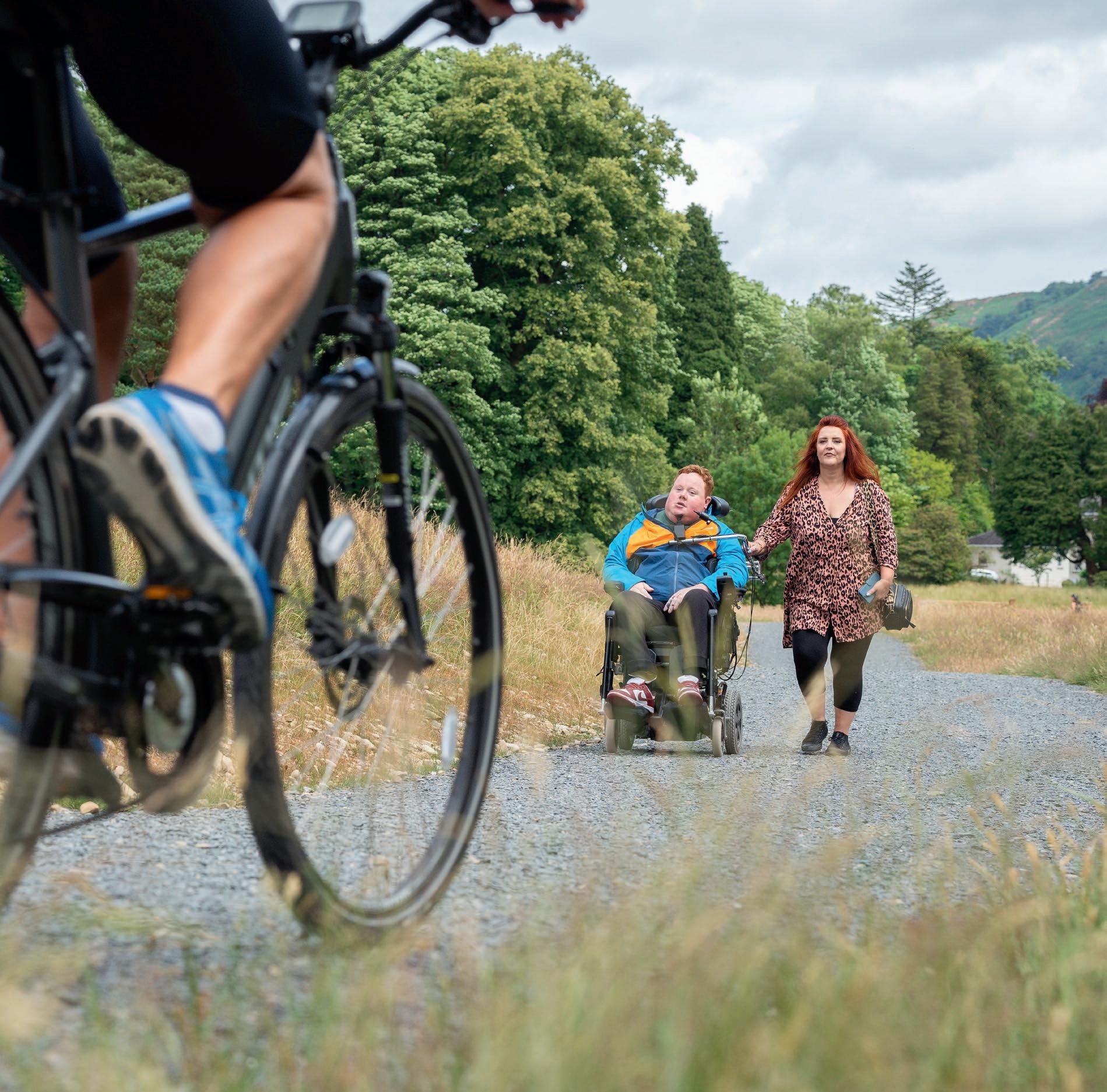
13 A DESTINATION MANAGEMENT PLAN FOR CUMBRIA: 2024 TO 2030
West Windermere Way, Miles without Stiles
OBJECTIVE – RESOURCED TO DELIVER: SUPPORTING THE SECTOR AND ENSURING THE INFRASTRUCTURE TO DELIVER WORLD CLASS EXPERIENCES AND MEET THE NEEDS OF COMMUNITIES
It is not possible to deliver on the DMP’s previous objectives without a supporting infrastructure that has the capability to deliver world class experiences and a “warm welcome for all.” This objective is about supporting the visitor economy sector to be resilient, to operate effectively and to support innovation and productivity in the sector. It also addresses the opportunities and challenges in the delivery of services to visitors and the need to manage these in a way that offsets impact on our communities.
Ambition: Supporting the sector and the infrastructure needed by:
1
2
3
Implementing the workforce strategy for the visitor economy to address the skills gap and workforce shortage and reduce by a half the number of visitor economy businesses reporting the recruitment of staff as a significant problem (was 48% in October 2023).
Addressing access to affordable housing and the housing mix for staff and reduce by a quarter the number of visitor economy businesses reporting this as a significant problem (was 66% in October 2023).
Increasing the number of visitor economy businesses actively engaged in measures to improve environmental sustainability
4
Attracting increased investment across Cumbria to develop 5G and other advanced wireless technologies with the aim of reducing ‘not-spots’ and building future-proof mobile connectivity for visitors, businesses and residents, businesses and visitors.

A DESTINATION MANAGEMENT PLAN FOR CUMBRIA: 2024 TO 2030 14
BAHA, Bowness-on-Windermere
RESOURCING THE DMP
This DMP has a stretching set of objectives, priorities and ambitions for Cumbria, with a comprehensive action plan. The DMP will not be delivered without adequate resources from public and private sector partners collaborating together. The majority of actions are already underway and being delivered from existing budgets and plans or can be supported by partners working and sharing resources. However, there are some important activities and proposed actions that are not, as yet, resourced. The DMP will also help lever external funding from outside Cumbria.

15 A DESTINATION MANAGEMENT PLAN FOR CUMBRIA: 2024 TO 2030
Branthwaite Brow, Kendal
OBJECTIVE – DRIVE ECONOMIC GROWTH: INCREASING THE VALUE AND PRODUCTIVITY OF CUMBRIA’S VISITOR ECONOMY
OBJECTIVE – RESPONSIBLE & SUSTAINABLE: SUPPORTING RESPONSIBLE TOURISM, BENEFITTING THE ENVIRONMENT AND VIBRANT COMMUNITIES
• 1A: Continue to implement strategy to raise appeal and awareness of less wellknown and visited parts of the county
• 1B: Grow the all-season offer and become known as a year-round destination for all
• 1C: Regain and grow international spend and other higher value overnight stays
• 2A: Enhance and expand the opportunities and capabilities for convenient, low carbon visitor movement and experience(s) both into and inside Cumbria for the benefit of visitors, residents and workers
• 2B: Promote and support sustainable and active travel and experiences
• 2C: Increase the local social and economic benefit from visitor spend, supporting the vibrancy of our villages, towns and city
• 1D: Convert more visitors to overnight stays and extend the length of stays
• 1E: Adapt to and lead market trends and opportunities to ensure Cumbria attracts future new and repeat visitors
• 2D: Encourage, educate and engage all visitors in responsible tourism, protecting and valuing our environment and communities
• 2E: Support activities that sustain and enhance the environment
• 2F: Actively monitor and manage visitor pressure on key tourism destinations
All requiring coordinated, evidence-led, targeted and appropriately funded marketing
All requiring a coordinated approach to the strong use of data, evidence and intelligence gathering with a shared platform available to all to support joined up strategic visitor management
A DESTINATION MANAGEMENT PLAN FOR CUMBRIA: 2024 TO 2030 16
FIGURE 2: KEY OBJECTIVES & PRIORITY AREAS OF FOCUS, CUMBRIA DMP
OBJECTIVE – INCLUSIVE & ACCESSIBLE: ENSURING ALL VISITORS CAN ENJOY CUMBRIA AS A DESTINATION
• 3A: Ensure Cumbria’s infrastructure and welcome is accessible to all
OBJECTIVE – RESOURCED TO DELIVER: SUPPORTING THE SECTOR AND ENSURING THE INFRASTRUCTURE TO DELIVER WORLD CLASS EXPERIENCES AND MEET THE NEEDS OF COMMUNITIES
• 4A: Develop better infrastructure and attract investment in the quality and range of product
• 3B: Ensure Cumbria’s product and welcome is inclusive for all visitor groups
• 4B: Attract, retain and develop a skilled and committed workforce
• 4C: Support businesses to move to more environmentally sustainable operations
• 4D: Support businesses to adapt, innovate and achieve excellence
• 4E: Ensure digital connectivity (both mobile and fixed line) is fit for the future
• 4F: Ensure provision of adequate and consistent visitor services across Cumbria
• 4G: Ensure a joined-up approach to enable a resilient visitor economy
All requiring a coordinated approach to the strong use of data, evidence and intelligence gathering with a shared platform available to all to support joined up strategic visitor management
17 A DESTINATION MANAGEMENT PLAN FOR CUMBRIA: 2024 TO 2030
OBJECTIVE –DRIVE ECONOMIC
GROWTH:
1.1: Invest in enhancing the quality of place in under visited locations
1.2: Invest in enhancing the visitor product and experiences in under visited locations
1.3: Funded and coordinated marketing and promotion of under visited locations
1.4: Support and extend programme of events and festivals outside peak periods and in less well visited parts
1.5: Identify opportunities to develop more wet weather activities and attractions to support tourism in off-peak periods
1.6: Funded and coordinated marketing and promotion of Cumbria in off-peak periods
1.7: Funded and coordinated marketing and promotion of Cumbria to international markets
1.8: Develop a strategic approach to promote Cumbria to film and TV productions
1.9: Develop and implement a Cumbria food and drink strategy
1.10: Roll out a Cumbria motorhome strategy
1.11: Develop the CCR200 (Cumbrian Coastal Route) concept further
1.12: Increase local community awareness and use of and pride in visitor facing services
1.13: Research into new market opportunities
OBJECTIVE –RESPONSIBLE & SUSTAINABLE:
2.1: Enable more visitors to arrive in Cumbria via public transport
2.2: Market and promote visitor travel to Cumbria by public transport
2.3: Sustain and improve public transport infrastructure within Cumbria for visitors/communities
2.4: Develop an integrated end-to-end transport system for visitors with a proactive approach to parking provision and traffic management, to support modal shift
2.5: Develop a suitable EV charging infrastructure for visitors in Cumbria and en route to Cumbria
2.6: Ensure planning to reduce traffic issues and minimise disruption at peak periods
2.7: Further expand and develop the network of cycling routes across the county
2.8: Place to Plate - develop local supply and sourcing programme
2.9: Create a responsible tourism education strategy
2.10: Programme to teach and inspire young people about the countryside and environment awareness
2.11: Review opportunities for raising funding to support the vision
2.12: Invest in renewal and improvement of landscape enjoyed by visitors (inc. Fix the Fells)
2.13: Improve the environment of our waterways and coast
2.14: Active destination management in key locations
2.15: Data sharing and real-time information on visitors
2.16: Visitor safety management strategy
A DESTINATION MANAGEMENT PLAN FOR CUMBRIA: 2024 TO 2030 18
FIGURE 3: KEY ACTIONS, CUMBRIA DMP
OBJECTIVE –INCLUSIVE & ACCESSIBLE:
3.1: Better provision of consistent and comprehensive information on accessibility for visitors
3.2: Awareness raising and practical advice about accessibility market and needs
3.3: Improve accessible and inclusive facilities across the visitor economy infrastructure
3.4: Develop a better evidence base on needs and opportunities from new, inclusive visitor markets
3.5: Develop a strategic approach to ensure the delivery of Cumbria as an inclusive destination
3.6: Support “warm welcome” programmes to make all visitors welcome
OBJECTIVE –RESOURCED TO DELIVER:
4.1: Support local businesses and organisations to access grant and other funding opportunities
4.2: Help attract distinctive external investment into the sector
4.3: Review our affordable visitor accommodation offer for young people (and others)
4.4: Support skills development within the sector
4.5: Continue to raise awareness of career paths within the sector
4.6: Raise awareness of Cumbria as a place to live and work
4.7: Develop and extend worker transport initiatives
4.8: Invest in new and expanded accommodation for workers in the sector
4.9: Support tourism businesses to develop ways to increase their positive impact on the environment
4.10: Deliver a visitor economy innovation programme
4.11: Develop a hospitality school of excellence
4.12: Roll out high-quality digital infrastructure to support mobile and fixed location connectivity for all visitors
4.13: Review and develop a joined-up strategy for toilet, waste and parking provision
4.14: Public realm review for key visitor destinations across Cumbria
4.15: Enhance data sharing and intelligence gathering
19 A DESTINATION MANAGEMENT PLAN FOR CUMBRIA: 2024 TO 2030

full document: A DESTINATION MANAGEMENT PLAN FOR CUMBRIA: 2024 TO 2030 can be found at www.cumbriatourism.org/dmp
Tourism, Windermere Road, Staveley, Kendal, Cumbria LA8 9PL 01539 822222 | info@cumbriatourism.org #theperfectplacetobe facebook.com/LakeDistrictCumbria @LakesCumbria @lakedistrictcumbria @lakedistrictcumbria
The
Cumbria




























